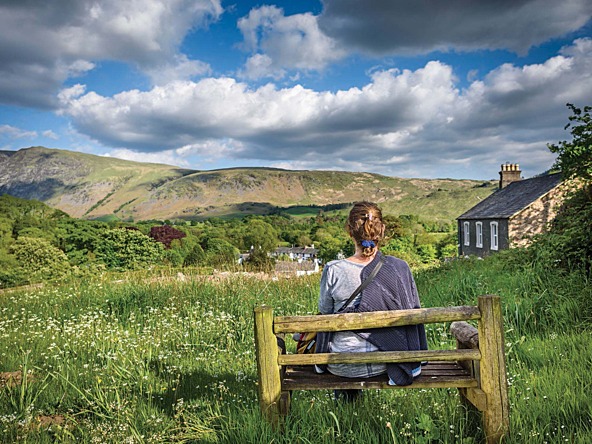FEATURE11 November 2019
False idyll: Researching domestic abuse
x Sponsored content on Research Live and in Impact magazine is editorially independent.
Find out more about advertising and sponsorship.
FEATURE11 November 2019
x Sponsored content on Research Live and in Impact magazine is editorially independent.
Find out more about advertising and sponsorship.
Domestic abuse lasts longer in rural areas, with stigma and shame preventing victims from seeking help and perceptions of rural communities masking the scale of the problem, writes The Buzzz’s Alan Bowman.

Domestic abuse may not hit the headlines like knife or gang-related violence, but – as a crime – it is growing at an alarming rate. According to the Femicide Census produced by Women’s Aid in the UK, a woman was killed by her male partner or former partner every four days, on average, over the past 10 years.
This figure represents only the tragic tip of the iceberg, however. Underneath is a vast and complex range of abuse that involves coercion, controlling behaviour, stalking, ongoing mental abuse, financial control, and sexual control, in what has been summarised as ‘intimate terrorism’. It involves male and female victims and, as we discovered in our research, a significant proportion of victims who have lived like this for many years. Estimates show that one in four people in the UK today has experienced or witnessed domestic abuse as a child or adult (Refuge’s 2017 annual report).
While the incidence rate for domestic abuse crimes classified by the Crime Survey for England and Wales is similar for urban and rural areas, the reporting rate – people who call the police or self-refer to support services – in rural areas is a little more than half of that for our towns and cities, according to the Dyfed-Powys Police Analysis in our report.
This is a stark finding in its own right and the implication for victims is huge. It means the data underpinning the commissioning of domestic abuse support services is fundamentally flawed. Consequently, rural services are being diverted to deal with the increasing caseloads as domestic abuse grows. As a result, rural victims are marooned without access to help, while the absence of support increases the likelihood of not reporting – and so the gap continues to grow.
Our research was carried out on behalf of the National Rural Crime Network (NRCN), which represents 30 police and crime commissioners and police forces across England and Wales, as well as a wide range of other bodies with a deep interest in community safety and rural affairs. It highlights the hidden scale of the problem within rural communities.
Our investigation covered the entire system – from the planning and commissioning of support, its management and police interventions, to victims and survivors of domestic abuse.
One of the key insights was the impact that rural society and village life play in stopping victims from reaching out for help. In many places, we found a deeply patriarchal influence; in others, a refusal to believe ‘that sort of thing goes on in a place as beautiful as this’.
Most commonly, we found that victims felt shame and stigma in admitting to friends and neighbours that they were being abused. This factor alone was twice as significant as in urban areas, and challenged our team’s preconceptions of rural communities pulling together and looking out for each other. This may be true when it comes to the village fete, but is absent in the context of domestic abuse.
On an altogether more sinister level was evidence from a minority of cases that rural locations were being sought deliberately by perpetrators because they could use physical isolation as another weapon in their armoury. Control over your partner is much easier to establish when there are no neighbours or local transport.
The study took 14 months to complete, from literature review to a final opt-in online survey. Funding was initially provided by the NRCN, but contributions from seven police force areas helped to extend it. The project grew to become the most comprehensive and detailed study of domestic abuse undertaken in the UK. It shows how collaboration and sharing costs by public services can provide access to more relevant and broad-based findings than is achievable as a single body.
The Buzzz is a small independent consultancy and the scale of the study necessitated a collaborative approach. We built a team that could cover areas from Durham to Devon and Cornwall. Access to survivors was achieved through initial involvement with their service providers and caseworkers, so that we could reach a diverse sample of people with relevant stories to share.
Interviews typically lasted an hour and a half, and were conducted face to face in a safe environment. We used a storytelling narrative approach so that people could share their stories in a way that felt comfortable. Where necessary, we developed the detail with conversational questions, to help us understand the emotional impact, the drivers of abuse, coping mechanisms and, ultimately, how they left the relationship behind and the legacy of the experience.
We also ran mini focus groups within refuges or support meetings, including women aged 19 to 78, men, people who had changed their identity to avoid being tracked down, and those who had sought safety hundreds of miles from where the abuse happened. Their stories had a profound effect on everyone involved.
Commissioners of rural victims services, based in city or county halls, are now being encouraged to use data analysis in their strategic planning and to look for ‘white spaces’ on the map, where there are no reported incidents. It is likely that abuse is going on in these locations, with victims unable to act, or not knowing what help is available, and too ashamed to enlist the help of neighbours.
The full report is available to download at ruralabuse.co.uk
Alan Bowman is founder of The Buzzz
This article was first published in the World Views section of Impact magazine (October 2019 issue).
0 Comments